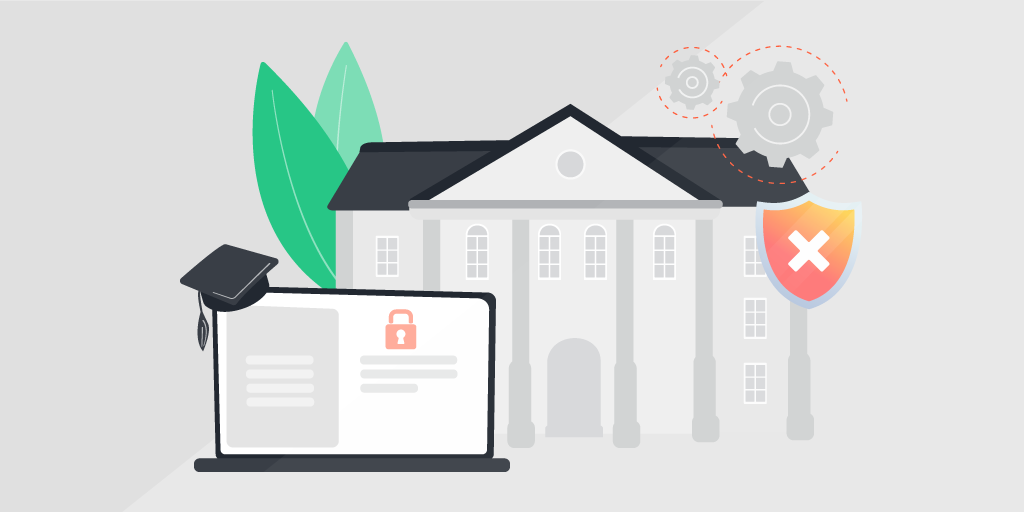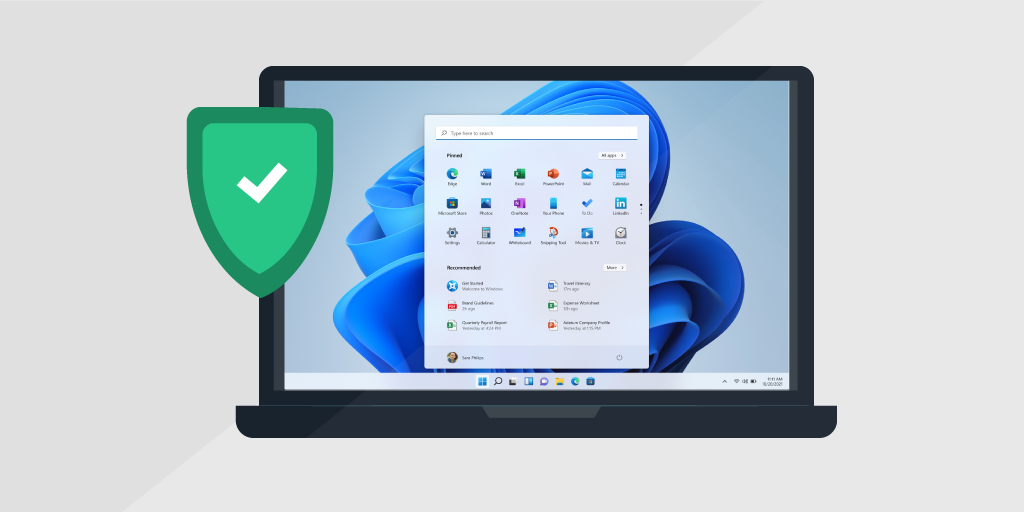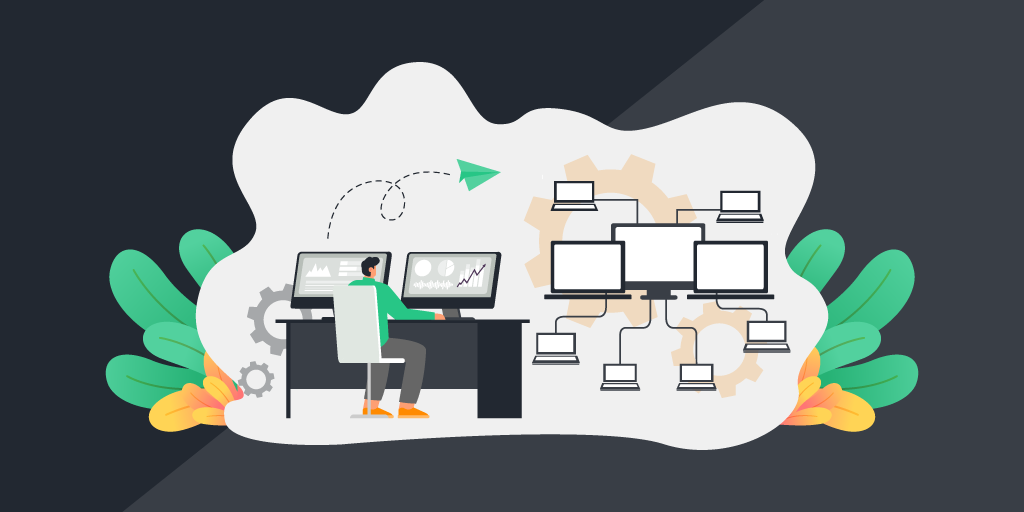
Over the past few years, digital transformation has upended organizations in every industry, and education is no exception. Laptop computers, mobile devices and interactive touchscreens are common in many classrooms now, from elementary schools to high schools and higher education institutions.
In fact, a 2019 study found that 80% of teachers in the U.S. have computing devices in their classrooms, and 16% reported having bring your own device (BYOD) policies. Over the past year, downloads of educational apps have risen by 130%. The sudden transition from physical classrooms to distance learning during the Covid-19 pandemic accelerated the trend — and it also shined a light on the growing reliance of students, faculty and staff on technology.
Digital technologies empower students and teachers with access to advanced learning programs, material and resources — and have been instrumental in the continuation of education despite widespread school closures due to Covid-19. Even as students begin to return to in-person learning this year, educators’ increasing dependency on digital resources will require IT teams to maintain strict control and oversight of a growing IT estate. There are other benefits as well, including reduced risk and operational overhead, and the ability to optimize costs — a key requirement in an industry that must operate with limited resources and tight budgets.
This blog post takes a look at the challenges IT teams at educational institutions face at why efficient IT asset management is no longer a nice-to-have — it’s an imperative.
Securing the Expanding IT Estate
As schools continue to adopt digital technologies to augment their educational programs, they’ve become vulnerable to cybersecurity threats. Take, for example, a large Florida school district, who suffered a ransomware attack in April 2020. Fraudsters encrypted district data and demanded $40 million in ransom, threatening to erase the data and post the personal information of students and faculty online if they did not receive it.
While this example is extreme, attacks like it are not uncommon; ransomware attacks disrupted learning at 1,681 schools, colleges and universities in 2020, and seven districts had personal and sensitive data published online — a practice called “doxing.”
A report by the FBI and several federal security agencies found that 57% of all reported ransomware attacks in August and September of the 2020-2021 school year targeted schools. This was due in large part to the shift to distance learning and the distribution of district-issued devices to people’s homes. In addition to ransomware, DDoS attacks, disruption and harassment on video-conferencing sessions, doxing and malware attacks are plaguing schools, putting sensitive data they maintain at risk, and impacting resource performance and availability.
The pandemic has intensified the need to track and maintain an expanding array of IT assets. When distance learning became mandatory, district-issued devices rapidly made their way into the homes of faculty and students, often without the necessary protections in place. Not only are there many more devices to track, those devices are connecting to the network via unsecured home networks, which may also be tethered to various IoT devices and other connected personal computers and devices that can serve as gateways for cybercrime.

Software and Hardware Mismanagement Leads to High Overhead
Not only are Educational IT departments often in the dark about outdated operating systems opening up vulnerabilities on servers and end-user devices, they struggle to keep tabs of software licensing and usage.
According to License Dashboard, 22% of higher education institutions operate with no official software asset management strategy in place. Without insight into software usage, educational institutions are missing out on opportunities to optimize contracts and agreements, or take advantage of potential discounts.
Additionally, an incomplete, inaccurate inventory of the IT estate may also result in hardware assets sitting idle or at half capacity, leading to unnecessary costs. Knowing how many devices have been distributed, who is using them and how many are still available for distribution is critical information to have on-hand, as districts continue to supply students with computers to support distance learning.
But manual tracking systems and reporting are prone to human error and become outdated as soon as they’re completed. They’re time-consuming and lead to higher operational overhead, as well. Without up-to-date, accurate reporting, decision making is slow and inefficient, which makes it difficult to meet the evolving needs of students, faculty and staff. It can also impact the quality of educational experiences while leading to teacher frustration and turnover.
42% of IT decision makers at educational institutions say software asset management helped avoid unexpected costs associated with purchasing further licenses or paying noncompliance fines.
Sean Robinson, Director of Software Asset Management at License Dashboard.
Know Your IT: ITAM Delivers Total Visibility for Security and Cost Optimization
IT and system administrators at educational institutions must do away with traditional manual, siloed approaches to managing the IT estate, and take steps to create a single system of record that contains all the data necessary to manage the growing list of software and hardware assets. Implementing an agentless network discovery solution such as Lansweeper is a cost-effective way to create a centralized asset inventory of all devices on the network — Windows and Mac devices, printers, routers, and switches — as well as detailed information about all of the software on those devices — versions, licenses, usage statistics and more.
Lansweeper automatically scans entire networks in seconds, giving organizations full visibility into their growing and ever-changing IT environments. It eliminates paper-based asset tracking and reduces the high operational overhead of maintaining a diverse IT infrastructure.

With access to a complete, up-to-date asset inventory, IT teams can more easily assess security threats and vulnerabilities, and take steps to mitigate risk. They can create custom vulnerability reports to identify where patches and updates are needed, update the software or remove compromised devices from the network. Additionally, IT teams can leverage Lansweeper to:
- Produce accurate reports that help with purchasing decisions and identify potential cost savings.
- Analyze software usage to take advantage of software licensing discounts and optimize contracts.
- Streamline compliance and reporting, and simplify audits to save time and avoid fines.
- Make informed, data-driven decisions about technology that make better use of available funds.
“Having both Lansweeper and License Dashboard should help us maintain our position of being successfully able to manage where all of our hardware and software assets are in this new hybrid working world.“
Rob Crossland-Diskin, IT Asset Coordinator at University of Derby
Webinar: Why ITAM is Crucial for Educational Institutions
Join IT professionals from Penn State University, the University of Illinois Medical Center, and Moore Public Schools for an in-depth webinar.
Watch the WebinarA Proven Solution for Educational Institutions
The IT team at Brothers of Charity, a nonprofit educational organization with 14,000 employees and 24,000+ assets, leverages Lansweeper to eliminate manual tasks associated with maintaining a complete IT asset inventory and to simplify Microsoft license audits. Central Head of IT Frank De Bree said that prior to using Lansweeper, IT personnel at the organization were spending an average of half a workday manually entering asset information into the program.
“We didn’t have a system in place capable of performing an IT asset inventory, so the team did it all by hand. Once Lansweeper was in place, all network changes, events and additions were visible within 24 hours. The power of Lansweeper is that it allows us to access rich information about any aspect of our entire network quickly and effortlessly.”
Frank De Bree, Central Head of IT, Brothers of Charity
Similarly, a large American community college with more than 12,000 assets and multiple locations relies on Lansweeper’s comprehensive ITAM platform to provide a single-pane-of-glass to perform IT management, inventory and reporting.
“Lansweeper offers auditing capabilities that help us meet the requirements of the finance department. When they come to our campus location, I immediately turn on Lansweeper and pinpoint the device they’re interested in recording, and they have access to whatever information they need.”
Dan, System Administrator
Could your organization benefit from implementing Lansweeper? To learn more, take a look at our product overview, watch our short demo videos or browse through our extensive webinar section. If you have any questions, don’t hesitate to reach out. We are happy to answer any questions and look forward to helping you secure and empower your expanding IT estate.


